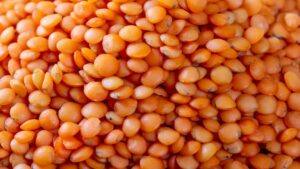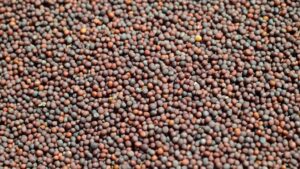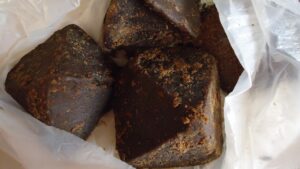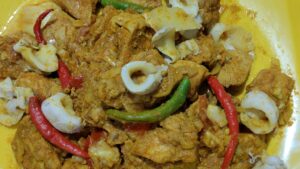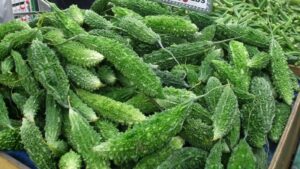Hilsa fish, also known as “Ilish” in Bengali, holds an iconic and revered place in Bengali cuisine.
This fish is highly prized for its unique flavor and is often considered the “King of Fish” in Bengal.
Its flavor and taste is unmatched and pure divine. The fish also claims a royal status in culinary culture of Bengal.
It is a river fish. Padmar ilish (Hilsa in river Padma) is the most delicious. The best Hilsa comes from Chandpur in Bangladesh.
Hilsa is the state fish of West Bengal and the national fish of Bangladesh.
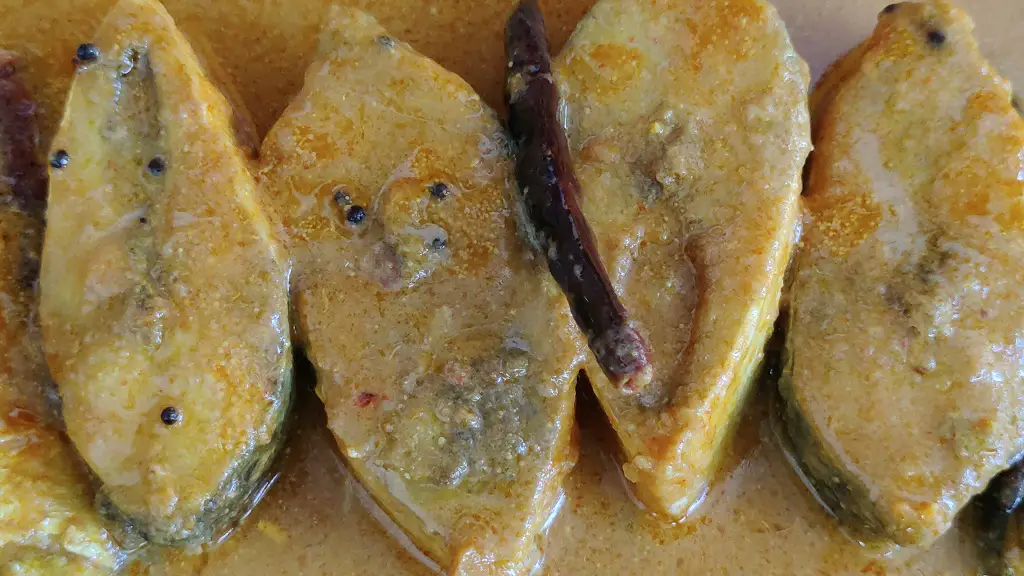
Key Takeaways
- Hilsa fish, known as “Ilish” in Bengali, is a revered and iconic ingredient in Bengali cuisine, celebrated for its unique flavor.
- Hilsa holds cultural significance as the state fish of West Bengal and the national fish of Bangladesh.
- Bengali cuisine features a variety of Hilsa dishes, each prepared with distinct flavors and cooking techniques.
- Cooking Hilsa requires careful handling, marination, and the use of mustard oil, with options for steaming or grilling in banana leaves.
- Hilsa’s exceptional taste, buttery texture, and cultural importance make it a favorite among seafood enthusiasts and a symbol of Bengali pride.
Use of Hilsa Fish in Bengali Cooking
Here’s a glimpse into the various ways Hilsa fish is used in Bengali cuisine:
Ilish Bhapa: This is a classic Bengali dish where Hilsa fish is steamed with mustard paste, coconut, green chilies, and other spices wrapped in banana leaves. The result is a delicate, flavorful fish with a distinct mustardy kick.
Ilish Machher Jhol: This is a simple and comforting Hilsa fish curry made with ingredients like mustard oil, nigella seeds, turmeric, and green chilies. It’s a staple in many Bengali households and is often enjoyed with steamed rice.
Shorshe Ilish: Hilsa fish is often cooked in a rich and creamy mustard sauce, known as “shorshe.” The pungent flavor of mustard pairs beautifully with the fatty texture of Hilsa fish.
Ilish Paturi: Similar to Ilish Bhapa, this dish involves marinating the fish with spices and wrapping it in banana leaves. It’s then grilled or steamed, imparting a unique smoky flavor.
Ilish Macher Tel Jhal: In this preparation, Hilsa fish is cooked with mustard oil, black cumin seeds, and green chilies, resulting in a spicy and aromatic dish that’s full of flavor.
Ilish Maach Tawk: This is a tangy and sour preparation where Hilsa fish is cooked with tamarind paste, green mangoes, and spices, creating a delightful blend of flavors.
Ilish Macher Sorshe Posto: This dish combines the flavors of mustard and poppy seeds, creating a rich and creamy sauce that complements the delicate taste of Hilsa fish.
Ilish Bhorta: Hilsa fish head is often used to prepare a spicy mashed fish head dish. It’s a delicacy that’s rich in flavors and textures.
Ilish Pulao: Sometimes, Hilsa fish is used to make a fragrant and flavorful pulao (rice dish) by layering marinated fish and rice with aromatic spices.
Ilisher Tel Jhal: This is a fiery Hilsa fish curry made with hot green chilies, ginger, and garlic, creating a spicy and intensely flavorful dish.
Ilish Machher Tok: This sweet and sour preparation involves cooking Hilsa fish with jaggery, tamarind, and a blend of spices. It’s a delightful balance of flavors.
Hilsa fish is not just a delicacy in Bengali cuisine; it’s a cultural symbol and a source of pride for the people of Bengal.
The art of cooking Hilsa fish is passed down through generations, and it continues to be a cherished part of Bengali culinary heritage.
Hilsa Fish Cooking Tips
Cooking Hilsa fish requires some special care to preserve its unique flavor and texture. Here are some cooking tips for preparing delicious Hilsa fish dishes:
Choosing Fresh Hilsa: The first step to a great Hilsa dish is selecting fresh fish. Look for Hilsa that is firm, has shiny scales, and a fresh, sea-like smell. Avoid fish with an ammonia-like odor or signs of discoloration.
Handling with Care: Hilsa fish is delicate, and its flesh can easily break apart. Handle it gently to avoid damaging the fish’s texture.
Dealing with Bones: Hilsa fish has many small, fine bones. You can choose to remove the bones before cooking or eat the fish carefully, spitting out any bones as you go. Removing the bones is recommended for a more enjoyable dining experience.
Marination: Marinating Hilsa fish can enhance its flavor. A common marination involves rubbing the fish with turmeric and salt and letting it sit for about 15-20 minutes. Some recipes also call for marinating with mustard paste.
Mustard Oil: Mustard oil is a traditional choice for cooking Hilsa fish, as its pungent flavor complements the fish’s taste. Heat the oil until it smokes and then allow it to cool slightly before using it in your recipe.
Banana Leaves: When preparing dishes like Ilish Bhapa or Ilish Paturi, use banana leaves to wrap the fish. This imparts a unique aroma and flavor to the dish. Before using, wilt the banana leaves slightly over an open flame to make them pliable.
Steam or Grill: Steaming or grilling Hilsa fish wrapped in banana leaves is a popular cooking method. It preserves the fish’s natural juices and flavors.
Use Fresh Spices: Opt for fresh spices and herbs when cooking Hilsa. Grinding mustard seeds, for example, just before using them in your recipe will result in a more robust flavor.
Low and Slow: When cooking Hilsa, especially in curries or gravies, use low to medium heat. Slow cooking allows the flavors to meld, and it prevents the fish from overcooking and becoming tough.
Tamarind or Green Mango: To add a tangy element to your Hilsa dish, consider using tamarind paste or green mango. These ingredients balance the richness of the fish.
Avoid Overcooking: Hilsa fish cooks quickly, so avoid overcooking it. Check for doneness by gently inserting a fork into the fish; it should flake easily.
By following these tips, you can prepare Hilsa fish dishes that showcase its distinctive flavor and are a delight to the senses.
Is Hilsa Fish Tasty?
Here’s why Hilsa fish is considered tasty:
Distinctive Flavor: Hilsa fish has a distinctive flavor that is both rich and unique. It has a mildly sweet and slightly earthy taste with a hint of natural saltiness. The fish’s flavor is often described as delicate and buttery, making it a favorite among seafood enthusiasts.
Buttery Texture: The texture of Hilsa fish is another reason for its popularity. It has a tender, fatty flesh that melts in your mouth when cooked correctly. The high oil content in the fish contributes to its luscious, buttery texture.
Versatility: Hilsa fish can be prepared in various ways, from traditional Bengali recipes like Ilish Bhapa and Shorshe Ilish (Hilsa in Mustard Sauce) to grilled or pan-fried dishes. Its versatility allows it to be paired with a wide range of flavors and spices, enhancing its taste.
Cultural Significance: In Bengal, Hilsa fish holds deep cultural significance, and it’s often associated with celebrations and special occasions. This cultural connection adds to the overall enjoyment of the fish.
Unique Cooking Techniques: The traditional cooking methods used for Hilsa fish, such as steaming or grilling in banana leaves, infuse it with aromatic flavors that complement its natural taste. These methods enhance the overall dining experience.
Complementary Ingredients: Hilsa fish pairs well with ingredients like mustard, green chilies, coconut, and tamarind, which further enhance its taste and add layers of flavor to the dishes.
While taste is subjective, Hilsa fish is celebrated for its unique and exceptional flavor profile.
Those who appreciate delicate, flavorful, and buttery seafood often find Hilsa to be a true culinary delight.
If you have the opportunity to try it, you may discover why it holds such a revered place in Bengali and South Asian cuisines.
How Do You Know When Hilsa Fish is Cooked?
Determining when Hilsa fish is cooked is essential to ensure that it’s perfectly done without overcooking, which can result in a loss of flavor and texture. Here’s how you can tell when Hilsa fish is cooked:
Texture: One of the most reliable indicators of doneness is the texture of the fish. When Hilsa fish is fully cooked, the flesh becomes tender and flakes easily when touched with a fork or gently pressed. The flesh should no longer feel raw or translucent.
Color: The color of the fish can also provide a clue. Hilsa fish typically turns from a translucent or slightly opaque appearance when raw to a more solid, opaque color when cooked. The change in color indicates that the fish has undergone the cooking process.
Firmness: Another way to determine if Hilsa fish is cooked is by checking its firmness. When you press the fish gently with your finger or a fork, it should offer some resistance but still be tender. If it feels mushy or overly soft, it may be overcooked.
Flaking: As mentioned earlier, a cooked Hilsa fish should easily flake apart when touched. Use a fork to gently separate the flakes, and if they come apart without resistance, the fish is done.
Internal Temperature (optional): While it’s less common to use a thermometer for fish, you can check the internal temperature of the fish. Hilsa fish is generally safe to eat when its internal temperature reaches 145°F (63°C). However, this method is less commonly used for Hilsa compared to other meats and fish.
Keep in mind that the cooking time for Hilsa fish can vary depending on the size and thickness of the fish, the cooking method used (steaming, grilling, etc.), and the specific recipe you’re following.
Generally, Hilsa fish cooks relatively quickly, so it’s essential to monitor it closely to avoid overcooking, which can result in a loss of its delicate flavor and texture.
Questions & Answers:
What is Hilsa Fish Called in English?
Hilsa is an English word. In Bengali, the fish is called Ilish.
How Can You Tell Padma Ilish?
Padma ilish is bigger in size and they have milky-white, softer and juicier flesh.
Is Hilsa Fish Available in Kerala?
Yes, Hilsa fish is available in Kerala. However, the taste is nowhere close to hilsa from the river Padma.
Is Hilsa Fish Very Bony?
Yes, Hilsa fish is known for being quite bony. It has a significant number of fine and tiny bones that run along the length of its body, especially in the belly and ribcage area.
Is Hilsa Fish the Tastiest Fish in the World?
Well, the answer varies from person to person. On being asked, majority of the Bengalis will vote for hilsa as the tastiest fish in the world.
However, people in other parts of India and the globe may differ.
Without getting into the debate, it can definitely be said that hilsa is one of the tastiest fishes in the world.
Why Do Bengalis Love Hilsa Fish?
The overwhelming and encompassing love for hilsa can be attributed to its soft oily shining texture and distinct mouth-watering flavor.
Bengalis love rich flavors and most hilsa dishes are spicy. It’s another reason why the Bengalis are so crazy about it.
Conclusion
In conclusion, Hilsa fish stands as an iconic and cherished symbol in Bengali cuisine.
Its unique flavor and cultural significance, as the state fish of West Bengal and the national fish of Bangladesh, make it a culinary treasure.
The versatile ways of preparing Hilsa, along with cooking tips, highlight its exceptional taste, while its cultural importance reflects the deep-rooted love Bengalis have for this fish.

